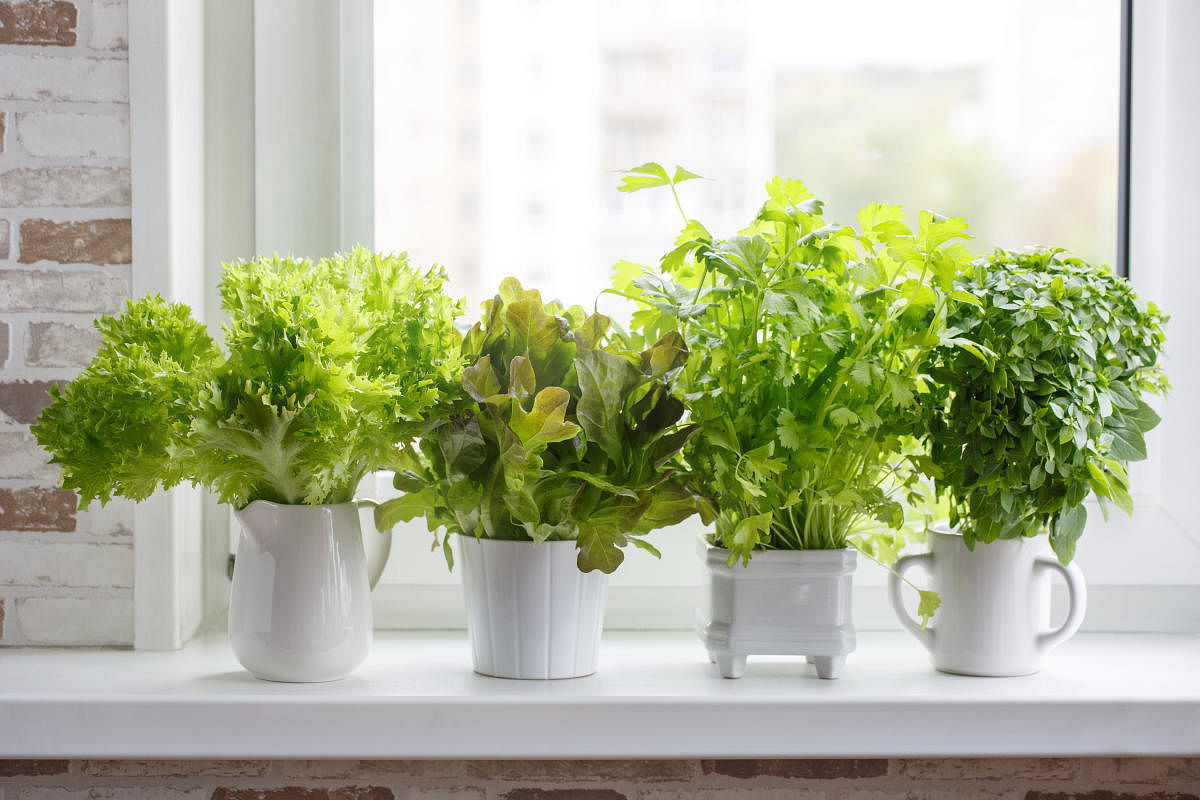Cities, by far, are the hotspots of the Covid-19 pandemic. The lockdown in Bengaluru revealed several shortcomings in the functioning of the city. While smart city projects focus on infrastructure-related development, critical aspects of city health, vulnerability to disasters, resilience and quality of life of its inhabitants are often neglected.
With uncertainty looming over the course of the pandemic and the knowledge that similar situations could well recur in the near future, there is a dire need to take a closer look at how cities function as systems.
During the lockdown, Bengaluru witnessed a surge of interest in growing food plants in home gardens. This was likely a result of not just the increase in time spent at home by the working community but also the motivation gained by having experienced how quickly the market-based system can collapse at times of crises.
Growing vegetables and fruits in our homes gives us access to fresh, clean, seasonal produce that is free from chemical residues. Lack of excessive handling and long distance transport keeps the nutritive value of the food intact. Can this interest be sustained and efforts scaled up to a level that can impact food-sourcing for the city? Several major cities around the world have already integrated urban agriculture into their city plans.
Today, Beijing produces Yuan 340 billion worth of produce annually with a growth rate of 6.1%. Asia’s largest urban farm is located on the rooftop of a university in Bangkok. Spanning 14,000 square metres, the world’s largest urban farm in Paris aspires to create a model that is not only sustainable but commercially viable as well.
The biggest constraint to growing food in urban areas is that of space. However, the idea of creating pockets of greenery within a landscape of concrete structures is not as far-fetched as it may seem. `Sky-farms’ on terraces and balcony gardens are feasible to a majority of city-dwellers living in houses that do not have ground space for gardens.
Public and private sector properties develop lawns as spaces with high aesthetic value. Sadly, despite the high water and pesticide investment involved, these ‘green blanks’ do not support biodiversity. Pockets of un-built spaces such as these, have the potential to support not just urban farming but also to create soil rich in microbes, provide habitat for urban fauna, capture and store carbon from the atmosphere, reduce the heat island effect, and ultimately, slow down climate change.
There is a great scope for adapting edible gardens to diverse environments and for addressing multiple environmental issues. Gardening enthusiasts have demonstrated that it is feasible to apply the concept of hydroponics and use of grey water to manage water consumption in a city that is facing water shortages.
Edible landscaping also has immense potential for creating beautiful, yet functional and productive spaces which can inspire people to reconnect with nature. Residential communities could join hands with the municipality to redesign local neighbourhood parks to include edible plants and trees. Rooftop farming in corporate houses can be combined with rain-water harvesting to produce harvest that could be used in employee kitchens and canteens, helping business establishments earn credits for greening their buildings.
Insect pollinators
The role played by pollinators in ensuring the smooth functioning of an ecosystem is often overlooked. A majority of the world’s leading crops rely on animal pollinators. A study estimated the total value of animal pollinated crops in India at about Rs 4,22,827.52 crore and the contribution of only insect pollinators at about Rs 1,12,615.73 crore (at 2012-2013 prices).
Bees contribute to nutrition as well, as they pollinate micronutrient-rich foods such as fruits, vegetables, pulses and nuts. Erratic climatic patterns cause anomalies in flowering cycles of host plants, putting pollinators increasingly at risk. The consequences of their decline on food systems can be alarming.
Our research highlights that urban areas have a higher number of bee species compared to adjoining rural areas. We speculate that this could be due to high chemical usage combined with large stretches of monoculture in rural areas.
In contrast, cities boast of a varied assemblage of plants in the form of home gardens, parks, avenue trees, etc. Vegetation in the form of home gardens, rooftop or terrace farms reduces the distance between food resource patches, thereby improving the chances of survival of bees in the city and supporting the scaling up of urban agriculture.
Urban farming can be integrated with the newly-launched CREST (Cost of Renewable Energy Spreadsheet Tool ) solar energy project that maps Bengaluru’s rooftops, to identify spaces suitable for rooftop farming. Consumption of locally grown food, or, locavory, becomes especially relevant in times such as the Covid-19 crisis.
Bengaluru has made its beginning in this movement and is poised to serve as a model for the country. Policy-based impetus would provide a significant boost to these efforts. As we step into the ‘new normal’, the time is right to reshape our cities to become more liveable and self-sustaining.
(Devy is Senior Fellow and Casiker is Research Associate, affiliated to Ecosystem Services and Wellbeing Programme, Ashoka Trust for Research in Ecology and the Environment)
